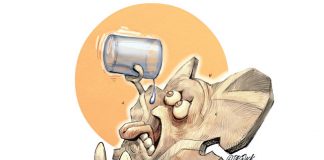
The world is changing substantially due to current developments in technology – and agriculture is deeply involved in these changes.
While some people may disagree, evidence suggests that the education gap between the rich and the poor is rapidly closing. Smartphones are a major reason for this, as they enable their users to access and share information from across the globe. They also allow people to get in direct touch with organisations and global experts in any field, and information is thus no longer limited to schools and classroom lessons.
READ:We can feed Southern Africa…
How technology is changing the world of work
This narrowing education gap and increased access to technology has resulted in the growth of the world’s middle class. It is anticipated that by 2050 there will be more than 3,5 billion people in this socio-economic group.
These people have improved access to digital and mobile technologies, and are using these to work from any location in
the world, at any time. Technology is thus not only changing people’s access to information; it is fundamentally changing the world’s employment arena, as companies are increasingly able to have employees working from home and in small satellite offices all over the world, instead of in one large, expensive office building in one geographical location.
In future decades, skills and knowledge scarcity among existing and potential employees will be an ever-diminishing problem for many companies.
Individual demands
One of the many features of this super-connected world is that customers will expect more personal choice than ever. Companies in all sectors, including agriculture, will have to adapt to ensure that they can provide their clients with personalised value.
A farmer will no longer have to accept, for example, tractors in only three colours. If a farmer wants a pink tractor with decorative horns on the front, the supplier will have to provide this – albeit at an additional cost – or face losing the farmer to a competitor. Only suppliers able to meet the individualised demands of their consumers will remain profitable.
One of the tools that will allow companies to meet individual consumer demands is 3D printing, which is now evolving very rapidly. It will no longer be necessary to mass-produce every single item to minimise production costs. 3D printing is already so advanced that, in an experiment, people were unable to differentiate a printed steak from a real steak, as the former matched the appearance, taste and texture of the latter.
By using this technology, companies can produce products that meet the exact demands of their clients. South Africa’s agricultural value-chain will have to adapt to these changes, and will not be able to continue generically adding value to primary agricultural commodities such as timber, maize, wheat and beef. Instead, the sector will have to determine ways in which to improve the experience of their customers when using their particular value-added agricultural products.
Even South Africa’s commercial forestry businesses will have to evolve to provide their clients with personalised products. They will have to ask themselves if the trees they are now growing are the right ones to produce the specific products needed by a client at a particular point in the future.
The primary and secondary agricultural sectors need to begin planning as soon as possible for the evolution of their clients’ personal product needs, so that they can meet these demands as effectively as possible. This will require proactive research, as well as anticipation and understanding to adapt production as necessary. Companies that lag behind will lose clients to more advanced competitors.
Personalised marketing strategies
One-to-one, personalised product marketing is also increasing. For example, the door-to-door milk delivery system was replaced by consumers buying their milk in retail stores. Ironically, this is now reverting to the original system.
Mobile communication technologies, and now even digital communications-enabled home appliances and warehouse stock management systems, are enabling people and companies to allow their computer systems to automatically re-order supplies. These are delivered directly to the premises of the clients whose computers ordered them.
This one-to-one marketing strategy is one of the greatest business opportunities that South Africa’s commercial farming and forestry industries currently have. Farmers are now increasingly able to take back the consumers that they had lost to processors and retailers, which acted as middlemen for the farmers’ products. However, these farmers will have to start investing in everything necessary to link up with, and supply, their clients directly.
Changing consumer demands: an example from the forestry sector
Trying to predict what will happen to South Africa’s commercial forestry operations in 20 to 30 years – that’s how long it can take to produce a harvest – is challenging. What we do know is that the world is now, for the first time ever, at a point in technological development where we can actually go paperless.
Most business and personal data is now being stored digitally on systems such as iCloud, instead of as hard copies on-site, while previous hard copies of information are being converted and digitally stored. All data can be accessed and viewed on computers, tablets or smartphones, and be digitally shared by email or other software.
How these technology developments will directly affect South Africa’s commercial forestry sector remains to be seen. There are almost no definite consumer trends that have yet emerged to provide clarification on the future of this particular sector.
However, one consumer trend that has emerged is the demand for the use of fewer heavy chemicals in the treatment of wood.
Consumers are becoming increasingly knowledgeable about and intolerant of the use of these chemicals, and the wood processing industry will have to find ways in which to use fewer chemicals to extract fibre from raw timber and in other processes.
In order to reduce the dependency on chemicals and thereby meet this consumer demand, South Africa’s foresters must develop, grow and process genetically modified tree species that require fewer chemicals during the processing phases. Our foresters must ask themselves what they are planting now, and whether what they are planting now will be relevant in the future. – Lloyd Philips
This presentation was given at Forestry SA’s 2016 Annual General Meeting at Tweedie, KwaZulu-Natal.
For more information, phone Ernst Janovsky on 011 350 6102, or email him at [email protected]. Alternatively, visit www.absa.co.za
The views expressed in our weekly opinion piece do not necessarily reflect those of Farmer’s Weekly.
This article was originally published in the 8th July 2016 issue of Farmer’s Weekly.













